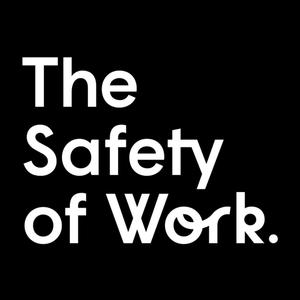
The Safety of Work
David Provan
Do you know the science behind what works and doesn’t work when it comes to keeping people safe in your organisation? Each week join Dr Drew Rae and Dr David Provan from the Safety Science Innovation Lab at Griffith University as they break down the latest safety research and provide you with practical management tips.
- 59 minutes 43 secondsEp. 125: Does ChatGPT provide good safety advice?
From discussing mobile phone use while driving to the challenges of giving advice to older adults at risk of falls, this episode covers ChatGPT’s responses to a wide range of safety topics - identifying biases, inconsistencies, and areas where ChatGPT aligns or falls short of expert advice. The broader implications of relying on ChatGPT for safety advice are examined carefully, especially in workplace settings. While ChatGPT often mirrors general lay understanding, it can overlook critical organizational responsibilities, potentially leading to oversimplified or erroneous advice. This episode underscores the importance of using AI-generated content cautiously, particularly in crafting workplace policies or addressing complex safety topics. By engaging with multiple evidence-based sources and consulting experts, organizations can better navigate the limitations of AI tools.
Discussion Points:
- Drew and David discuss their own recent experience with generative AI
- The multiple 15 authors are all experts, discussing the methods used
- Examining the nine different question scenarios
- ‘Mobile phone use while driving’ results
- Crowd/crush safety advice
- Advice for preventing falls in older adults
- Analyzing ChatGPT response formats
- Exercising outdoors near traffic with asthma
- Questioning ChatGPT about how to engage a distressed person who may commit suicide
- Safety working ‘under high pressure’ and job demands, burnout prevention
- Lack of nuance in ChatGPT
- The safety of sharing personal data on fitness apps, how can it be shared safely?
- Is it safe to operate heavy machinery when fatigued? Testing several ways to ask this question - sleepy, tired, fatigued
- Conclusions and takeaways
- The answer to our episode’s question: “AI is not currently a suitable source for writing safety guidelines or advice”
- Like and follow, send us your comments and suggestions!
Quotes:
“This is one of the first papers that I've seen that actually gives us sort of fair test of ChatGPT for a realistic safety application.” - Drew
“I quite like the idea that they chose questions which may be something that a lay person or even a generalist safety practitioner might ask ChatGPT, and then they had an expert in that area to analyze the quality of the answer that was given.” - David
“I really liked the way that this paper published the transcripts of all of those interactions
with ChatGPT. So exactly what question the expert asked it, and exactly the transcript of what ChatGPT provided.”- David
“In case anyone is wondering about the evidence based advice, if you think there is a nearby terrorist attack, chat GPT's answer is consistent with the latest empirical evidence, which is run. There they go on to say that the rest of the items are essentially the standard advice that police and emergency services give.” - Drew
“[ChatGPT] seems to prioritize based on how frequently something appears rather than some sort of logical ordering or consideration of what would make sense.” - Drew
“As a supplement to an expert, it's a good way of maybe finding things that you might not have considered. But as a sole source of advice or a sole source of hazard identification or a sole position on safety, it's not where it needs to be…” - David
Resources:The Article - The Risks Of Using ChatGPT to Obtain Common Safety-Related Information and Advice
DisasterCast Episode 54: Stadium Disasters
10 November 2024, 10:00 am - 44 minutes 41 secondsEp. 124 Is safety a key value driver for business?
We challenge the notion that high injury rates are punished by market forces, as we dig into this article that posits the opposite: that safety should be a performance driver. Our analysis dives deep into the credibility and methodologies of the article, emphasizing the critical role of peer review and the broader body of knowledge.
We'll also scrutinize the use of data as rhetoric versus evidence, focusing on the transparency and rigor of research methods when interviewing executives about safety practices. Is safety merely seen as a compliance issue or a strategic investment? We dissect the methodologies, including participant selection and question framing, to uncover potential biases. Finally, we critique a proposed five-step process aimed at transforming safety into a competitive advantage. From aligning on the meaning of safety to incentivizing employees, we expose significant gaps in academic rigor and alignment with established safety literature.
This conversation serves as a powerful critique of superficial analyses by those outside the safety science domain, offering listeners critical insights into the complexity of safety management and its potential alignment with organizational goals.
Discussion Points:- Re-examining the role of safety as a value driver for business
- Comparing contrasting research findings and cautioning about evaluating research
- Data as rhetoric in safety
- Transparency and methodology are crucial in research, especially when interviewing executives about workplace safety
- Executives' perspectives on safety are questioned, research methods are critiqued
- Clarifying claims and performance in business
- The five-step process for competitive advantage
- A study on the effectiveness of safety training methods
- Safety management is complex and requires evidence-based strategies, not superficial analysis or reliance on compliance training
- Strategic value of workplace safety
- Safety's impact on business success is uncertain, but exploring its alignment with organizational goals is important
- Takeaways
- The answer to our episode’s question: “the short answer is we still don't know!”
- Like and follow, send us your comments and suggestions!
Quotes:
“The trouble is, then we don't know whether what they're referring to is published research that might be somewhere else that we can look for for the details, or work that they did specifically for this article, or other work that they've done that was just never published.” - Drew
“We've got to be really careful…this is using data as rhetoric, not using data as data.” - Drew
“I wouldn't be surprised that most people see safety as both a cost and as an outcome.”- Drew
“So you've got two-thirds of these companies that don't even have any safety metric, like not even an injury metric or anything that they monitor.” - David
“So we kind of assume business performance means financial performance, but that in itself is never clarified.” - David
Resources:The Article: Safety Should Be a Performance Driver
Episode 121: Is Safety Good for Business?1 September 2024, 10:00 am - 59 minutes 21 secondsEp. 123: Is risk a science or a feeling?
From the perceived control in everyday activities like driving, to the dread associated with nuclear accidents, we discuss how emotional responses can sometimes skew our rational assessments of risk. Finally, we explore the ethical and practical challenges of balancing emotional and analytical approaches in risk communication, especially in high-stakes scenarios like terrorism and public safety. The conversation touches on real-world examples, such as the aftermath of the September 11 attacks and the controversial discussions around gun ownership. We emphasize the importance of framing and narrative in conveying risk information effectively, ensuring that it resonates with and is clearly understood by diverse audiences.
Discussion Points:
- Understanding risk perception, Paul Slovic's work and how it has shaped safety practices and decisions in everyday life
- “Affect heuristic” in decision making, influenced by emotions and past experiences, leading to inconsistencies in risk perception.
- Feeling in-control vs. “scary concepts”, risks are perceived differently due to emotions, control, and misunderstandings of probabilities, as seen in driving
- Risks are assessed differently based on probabilities, outcomes, framing, and context, influencing decision-making
- Other studies, looking at how people see risk, assessing your personal fear or risk from causes of death from cancer to stroke to car accidents to shark attacks vs. your own bathroom
- Balance between emotional and analytical risk evaluation
- Math and statistical examples of how risk is presented and perceived
- Post 9/11 terrorist fears vs. statistics
- Ethical considerations in communication, and challenges in conveying risk information
- Takeaways
- The answer to our episode’s question: “the short answer is both”
- Like and follow, send us your comments and suggestions!
Quotes:
“Risk is analysis where we bring logic, reason, and science or data or facts, and bring it to bear on hazard management.” - David
“There may not be a perfect representation of any risk.” - Drew
“If that's the important bit, then blow it up to the entire slide and get rid of the diagram and just show us the important bit.”- Drew
“It's probably a bit unfair on humans to say that using feeling and emotion isn't a rational thing to do.” - David
“The authors are almost saying here that for some types of risks and situations, risk as a feeling is great.” - David
Resources:
3 August 2024, 10:00 pm - 42 minutes 55 secondsEp. 122: What makes a good presentation?
The discussion provides an in-depth examination of the principles of multimedia, modality, and redundancy, all of which are crucial for optimizing learning and information retention. The episode also offers a wealth of practical strategies for interactive design and meticulous preparation, aimed at enhancing audience engagement and comprehension. These strategies include the use of visual aids, storytelling techniques, and audience participation elements to create a more dynamic and immersive experience. By adopting these methods, presenters can not only convey their message more effectively but also make the learning process more enjoyable and impactful for their audience.
The Paper’s Abstract
Active training techniques are effective because they engage learners in tasks that promote deep thought, discussion, problem-solving, social interaction, and hands-on learning. Passive training is less effective because learners are relegated to merely listening and watching as an instructor does all of the mental, social, and physical work. Bullet-point lectures may be poorly suited for meaningful training because they usually adopt a model of passive learning and they tend to combine spoken words and displayed text in ways that may actually decrease comprehension. PowerPoint can serve as a tool to promote active learning if we eliminate lengthy bullet lists and use instructional images to guide group discussions, problem-solving activities, and hands-on experiences.
Discussion Points:
- Background on the author Mitch Ricketts and the paper
- Active vs. passive learning
- Constructive and interactive learning
- Balancing text and images using multimedia, modality, and redundancy principles
- Use of questions on slides to prompt discussion and interaction
- Importance of managing cognitive load for audience engagement
- Clear, concise content and the value of signaling in presentations
- The significance of preparation and creating separate presentations for different needs
- Strategies for creating effective slides focused on visuals over text
- Moving away from bullet points to use impactful images and labels
- Takeaways - What you SHOULD do on your slides
- The answer to our episode’s question is, the short answer here is the title of the paper- "No more bullet points."
Quotes:
“This is what you might call an applied literature review. It's someone taking the literature and interpreting that literature for a particular purpose.” - Drew
“There's a lot of research that says that a lot of high school and university teachers rely on fairly outdated and disproven theories about these different modes of learning.” - Drew
“If that's the important bit, then blow it up to the entire slide and get rid of the diagram and just show us the important bit.”- Drew
“if you're a learner and you see a giant pair of goggles on a PowerPoint slide with just the word “goggles”, then all you're going to be doing now is just listening to what the presenter is saying. And hopefully they're saying something about goggles.” - David
“Slides aren't there to look interesting and slides aren't there to carry the weight of the content. Think of them as visual support.” - Drew
Resources:
The Paper: No More Bullet Points
21 July 2024, 10:00 am - 45 minutes 45 secondsEp. 121 Is safety good for business?
We examine whether a safe work environment truly enhances productivity and engagement or if it stifles business efficiency. Historical incidents like the Union Carbide disaster and BP's Deepwater Horizon blowout are analyzed to question if neglecting safety can still lead to profitability. Finally, we break down the misconception that good safety practices automatically translate to business profitability. We highlight the tangible benefits such as enhanced publicity, stronger client relationships, and improved employee satisfaction, and stress the importance of complex discussions about the actual costs vs. benefits of safety practices.
The Paper’s AbstractThis research addresses the fundamental question of whether providing a 15 safe workplace improves or hinders organizational survival, because there are conflicting predictions on the relationship between worker safety and organizational performance. The results, based on a unique longitudinal database covering over 100,000 organizations across 25 years in the U.S. state of Oregon, indicate that in general organizations that provide a safe workplace have significantly lower odds and 20 length of survival. Additionally, the organizations that would in general have better survival odds, benefit most from not providing a safe workplace. This suggests that relying on the market does not engender workplace safety.
Discussion Points:- Is safety “good for business”? Examining the relationship between safety and business viability
- Bhopal and the costs, Occidental - you can still make money without safety
- The backgrounds and qualifications of the paper’s authors
- Workplace safety can both benefit and hinder organizational survival due to productivity prioritization and potential risks
- Workplace safety and business performance are complexly related, with a study showing a decrease in survival odds and length due to safety prioritization
- Safety compliance at the lowest minimal cost may hinder productivity and divert attention from safety, leading to increased risks
- Safety is not inherently good for business; instead, it can bring tangible benefits like publicity, client relationships, and employee satisfaction
- Strict regulations and upfront investments in safety are necessary for fostering a safer work environment and ensuring business success
- Takeaways - Stop claiming safety is “good for business”
- The answer to our episode’s question is, “So the short answer is on average, no. At least according to this study, businesses are more likely to survive in the short term and long term if they're hurting more people more seriously.”
Quotes:
“The sorts of things that you do to improve safety are the sorts of things that I thought should also improve productivity and reliability in the long run.” - David
“Which is science, right? That's what it's about. We think we're right until we get a new piece of information and realize that maybe we weren't as right as we thought we were.” - David
“Even though there is a reasonably high volume of research out there, it's really hard to look very directly at the question.”- Drew
“So we know from this data that it's not true that providing a safe workplace makes you more competitive.” - Drew
Resources:The Paper: The Tension Between Worker Safety and Organization Survival
7 July 2024, 10:00 am - 1 hour 52 secondsEp. 120: What does the literature say about safety professionals?
David and Drew share insights into Dr. Provan’s PhD research journey, exploring the scarce guidance and fragmented views within academic research on safety practices. They discuss the challenges of painting a clear picture of the day-to-day responsibilities of safety professionals and how this prompted an in-depth investigation into the profession. As we peel back the layers of existing literature, we touch on the difficulty and complexity of condensing a vast array of theories and studies into a cohesive academic narrative.
The varied titles and the global patchwork of research that span numerous fields are explored, and although David’s search through databases and beyond revealed a trove of about 100 relevant articles, more insights may remain hidden. The discussion culminates with a look at the strategies employed by safety professionals to wield influence, foster trust, and align safety objectives with organizational goals. David's firsthand experiences and academic findings paint a vivid picture of the complex identity and influence that safety professionals must navigate in their pivotal roles.
The Paper’s AbstractSafety professionals have been working within organizations since the early 1900s. During the past 25 years, societal pressure and political intervention concerning the management of safety risks in organizations has driven dramatic change in safety professional practice. What are the factors that influence the role of safety professionals? This paper reviews more than 100 publications. Thematic analysis identified 25 factors in three categories: institutional, relational, and individual. The review highlights a dearth of empirical research into the practice and role of safety professionals, which may result in some ineffectiveness. Practical implications and an empirical research agenda regarding safety professional practice are proposed.
Discussion Points:- Safety professionals - are they a “necessary evil”?
- The role and perception of safety professionals, scarcity and fragmentation of literature, and challenges in condensing research. Safety positions have many varying titles globally.
- Institutional, organizational, and individual factors, regulatory environments, and professional associations
- Safety professionals face challenges when reporting to line managers, limiting their ability to challenge leadership and prioritize protection over workers.
- Balancing safety independence and bureaucracy
- A construction industry study - testing bureaucracy
- Alliance vs. Influence - Safety professionals act as the conscience of the organization, using constructive challenge and alliances to advocate for safety and align goals with broader objectives.
- Influence and trust in safety management - relational legitimacy, influence tactics, and symbolic enablers to promote best practices and trust within organizations.
- Practical takeaways from the paper
- The answer to our episode’s question is, “This is still an area of safety science that is a prime candidate for more PhD and postdoc research.”
Quotes:
“I went into this going, what has been published on the safety profession? And to do that, went to a couple of the key databases and used very deliberate keyword searches…” - David
“That was probably one of the first challenges- is that this role gets called so many different things in one country, let alone globally.” - David
“The included pieces were all in peer-reviewed publications, but there's a range of quality to those publications.”- David
“This connection between the bureaucratic activities of safety professionals and the value that the people who are exposed to the risk see in having a safety team was one of the most stark research findings in the literature.” - David
“Don't learn how to do your job from a TED Talk regardless of how inspirational a new view that talk is.” - Drew
Resources:The Paper: Bureaucracy, Influence, and Beliefs
26 May 2024, 10:00 am - 45 minutes 19 secondsEp. 119: Should we ask about contributors rather than causes?
Today’s paper, “Multiple Systemic Contributors versus Root Cause: Learning from a NASA Near Miss” by Katherine E. Walker et al, examines an incident wherein a NASA astronaut nearly drowned (asphyxiated) during an Extravehicular Activity (EVA 23) on the International Space Station due to spacesuit leakage. The paper introduces us to an innovative and efficient technique developed during Walker’s PhD research.
In this discussion, we reflect on the foundational elements of safety science and how organizations are tirelessly working to unearth better methods for analyzing and learning from safety incidents. We unpack the intricate findings of the investigation committee and discuss how root cause analysis can sometimes lead to the unintended consequence of adding more pressure within a system. A holistic understanding of how systems and individuals manage and adapt to these pressures may provide more meaningful insights for preventing future issues.Wrapping up, our conversation turns to the merits of the SCAD technique, which champions the analysis of accidents as extensions of normal work. By examining the systemic organizational pressures that shape everyday work adaptations, we can better comprehend how deviations due to constant pressures may lead to incidents. We also critique current accident analysis techniques and emphasize the importance of design improvement recommendations.
Discussion Points:- History and current state of accident investigation
- Systemic solutions in safety
- Traditional root cause analysis challenged by new perspectives
- NASA's 2013 EVA 23 space walk incident examined
- Organizational pressures and their impact on safety
- SCAD technique for accident analysis efficiency
- Shift from tracing causes to understanding work adaptations
- Emphasis on normal work analysis for accident prevention
- Critique of NASA's administrative processes in safety
- Cognitive biases and challenges in accident investigations
- Continuous evolution of safety practices
- Practical takeaways -how do you go beyond the immediate events to find broader systems and broader learnings?
- Canging language away from causes to talk about pressures and contributors
- The answer to our episode’s question is, “Yeah, it probably helps, but still doesn't fix the problem that we're facing with trying to get useful system changes out of investigations.”
Quotes:“We've been doing formal investigations of accidents since the late 1700s early 1800s. Everyone, if they don't do anything else for safety, still gets involved in investigating if there's an incident that happens.” - Drew
“If you didn't have this emphasis on maximising crew time they would have been much more cautious about EVA 23” - Drew
“Saying that there's work pressure is not actually an explanation for accidents, because work pressure is normal, work pressure always exists.” - Drew
“One of the things that is absent from this technique through and they call it an accident analysis method is there is no commentary in the paper at all about how to design improvements and recommendations.” - David
Resources:28 April 2024, 10:00 am - 49 minutes 50 secondsEp. 118 How should we account for technological accidents?
Using the Waterfall incident as a striking focal point, we dissect the investigation and its aftermath, we share personal reflections on the implementation of safety recommendations and the nuances of assessing systems designed to protect us. From the mechanics of dead man's systems to the critical evaluation of managerial decisions, our dialogue exposes the delicate balance of enforcing safety while maintaining the practicality of operations. Our aim is to contribute to the ongoing conversation about creating safer work environments across industries, recognizing the need for both technological advancements and refined human judgment.
Discussion Points:
- Drew loves a paper with a great name
- The circumstances surrounding the Waterfall rail accident
- How the “dead man system” works on certain trains
- Recommended changes from investigation committees
- In the field of safety, we seem more certain about our theories
- Exploration of narratives and facts in accident investigations
- Dead man's system and Waterfall derailment's investigation
- Post-accident list of operator failures
- Safety theories and organizational fault correlation critiqued
- Evolution of railway safety
- Discussion on managerial decisions amidst imperfect knowledge
- The importance of context in incident investigations
- Safety management systems and human judgment
- Insights on enhancing organizational safety
- Theoretical conclusions
- Practical takeaways
- The answer to our episode’s question is, “yes, keep it in mind as a digital tool”
Quotes:
“I find that some of the most interesting things in safety don't actually come from people with traditional safety or even traditional safety backgrounds.”- Drew
“Because this is a possible risk scenario, on these trains, we have what's called a ‘dead man system.” - David
“Every time you have an accident, it must have objective physical causes, and those physical causes have to come from objective organisational failures, and I think that's a fairly fair representation of how we think about accidents in safety.” - Drew
“They focused on the dead man pedal because they couldn't find anything wrong with the design of the switch, so they assumed that it must have been the pedal that was the problem” - Drew
Resources:14 April 2024, 10:00 am - 38 minutes 49 secondsEp. 117: Can digital twins help improve the safety of work?
Using the paper, “Digital Twins in Safety Analysis, Risk Assessment and Emergency Management.” by Zio and Miqueles, published in the technical safety journal, Reliability Engineering and System Safety, we examine intricate simulations that predict traffic flows to emergency management tools that plan safe evacuation routes, and we delve into how these virtual counterparts of physical systems are redefining risk assessments and scenario planning.
As we navigate the world of operational safety, we discuss the diverse array of models—from geometric to sophisticated hybrid simulations—and their groundbreaking applications in forecasting fire spread and optimizing evacuation procedures. These digital twins aren't just theoretical concepts; they're powerful, real-time lifesavers in emergency situations, emblematic of the future of safety science.
Discussion Points:
- What are digital twins and how are they used?
- Use of digital twins is de rigueur in traffic flow, fire engineering, water flow structure
- Identifying all recent papers written on digital twins
- Virtual simulations offer advanced risk assessment capabilities
- Overview of tasks and functions identified, industries - construction, naval engineering, manufacturing
- Technical discussion on digital twin creation and maintenance
- Six key challenges of digital twinning
- Smart paint innovation improves virtual model accuracy
- Cybersecurity risks
- Real-time operational safety monitoring
- Digital twins promise improved safety and operational efficiency
- Emergency management potentially bolstered by real-time simulations
- Practical takeaways
- Industry practice may surpass academic digital twin findings
- The answer to our episode’s question is, “yes, keep it in mind as a digital tool”
Quotes:
"Ideally, a digital twin is a complete virtual copy of a product or service that is an electronic simulation that is completely accurate compared to that real product or service.”- Drew
“One of the first documented digital twins was in the aerospace industry - NASA [used it] during the Apollo 13 program.” - David
“this idea of having a complete digital picture of the thing that you're building is becoming fairly common, so that lends itself very much towards using it for things like digital twins.” - Drew
“we may never quite know exactly how different the digital twin is from the physical object itself. That’s the challenge.” - David
Resources:
31 March 2024, 10:00 am - 36 minutes 52 secondsEp 116. Do audits improve the safety of work?
Ben's expertise guides us through an analysis of audit reports and accident investigations, laying bare the counterfactual reasoning that often skews post-incident narratives. It's an eye-opening examination that calls for a reimagined approach to audits, one that aligns with the genuine complexities of organizational culture and safety. Together, we confront the silent failure of safety audits and management systems, debating the need for a fundamental shift in how these are designed and conducted to truly protect workers. Join us for this critical dialogue that challenges preconceptions and seeks to reforge the link between safety audits and the real work of keeping people safe.
Discussion Points:
- Ben’s background and papers authored
- The reality of safety audits
- Safety plans - often perceived as comfort, not change
- Documentation versus actual safety
- "Audit masquerade" reveals gaps between theory and practice
- Examination of 327 audit corrective actions and their efficacy
- Administrative intentions vs. practical safety
- The weak connection between audits and physical safety improvements
- Concerns about evaluating work practices
- Audits can ‘fail silently’, giving false security assurance
- Practical steps for ensuring audit effectiveness
- A critical examination of safety management systems
- Key takeaways
- Ben’s answer to our episode’s question is, “Possibly, but it depends.”
Quotes:
"Some audits were very poorly calibrated to actually exploring and eliciting work - day-to-day work and operational risk.." - Ben
“you've got to pick and choose what to pay attention to. So unless something is really standing out as needing attention, then it can be hard to be curious and to notice these weak signals.” - David
“I'm proud to work in safety. I'm proud to call myself a sector professional. What really drove me to understand these systems was my love for safety, and I had just become so disillusioned with the amount of safety work I had to do. It wasn't helping.” - Ben
“Audits, like most activities, are very socio-political. There's a lot of vested power and conflicting interests.” - Ben
Resources:
Paper: Audit masquerade: How audits provide comfort rather than treatment for serious safety problems
Paper: How audits fail according to accident investigations: A counterfactual logic analysis
Ben Hutchinson LinkedIn17 March 2024, 10:00 am - 35 minutes 12 secondsEp. 115: Why are subcontractors at higher risk?
Safety isn't one-size-fits-all, especially for subcontractors who navigate multiple sites with varying rules and equipment. This episode peels back the layers on the practical safety management challenges subcontractors endure, revealing how transient work complicates the integration of safety protocols.
We scrutinize the institutional oversights and fragmented safety systems that often overlook the needs of these critical yet vulnerable players in the industry. Our conversation isn't just about identifying problems; it's an urgent call to action for better practices and a safer future for all involved in subcontracting work.
Discussion Points:
- The vagaries of subcontracting work
- Background on the paper being discussed
- Findings presented in the paper
- Institutional safety vs. the subcontractor’s work
- Expertise in the work does not equal expertise in safety
- Communication and safety work activities
- Institutional safety mechanisms
- Dangerous environments and lack of safety knowledge in that environment
- Subcontractors in the mining industry and the many layers and risks
- Safety rules are perceived differently by subcontractors
- Financial and other burdens to following safety protocols for subcontractors
- Key takeaways
- The answer to our episode’s question –the short answer in some of it is that there are lots of filtered and missing communication towards contractors' gaps in situational specific expertise that don't get identified and just our broad safety management systems and arrangements that don't work well for the subcontractor context.
Quotes:
"Subcontracting itself is also a fairly undefined term. You can range from anything from large, labour -higher organisations to what we typically think in Australia of a small business with maybe one to four or five employees." - Drew
“All of the normal protections we put in place for safety just don't work as well when there are contract boundaries in place.” - Drew
“the subcontractor may be called in because they've got expertise in a particular type of work, but they're in an environment where they don't have expertise.” - Drew
Resources:
3 March 2024, 10:00 am - More Episodes? Get the App
Your feedback is valuable to us. Should you encounter any bugs, glitches, lack of functionality or other problems, please email us on [email protected] or join Moon.FM Telegram Group where you can talk directly to the dev team who are happy to answer any queries.
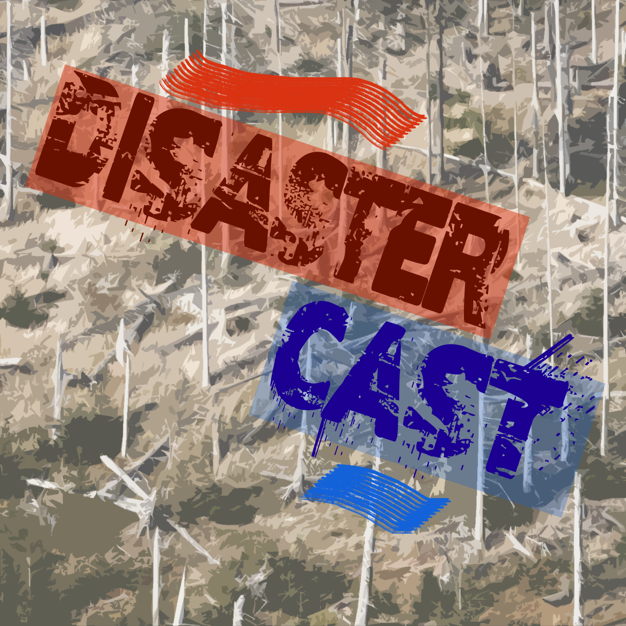 DisasterCast Safety Podcast
DisasterCast Safety Podcast
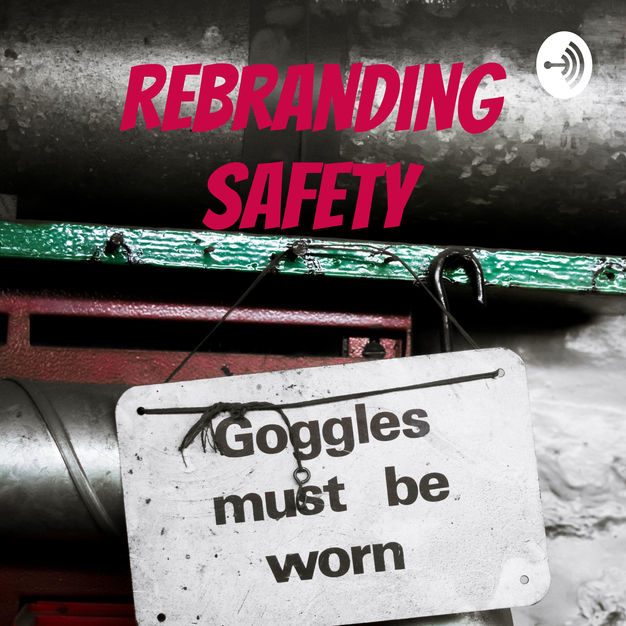 Rebranding Safety
Rebranding Safety
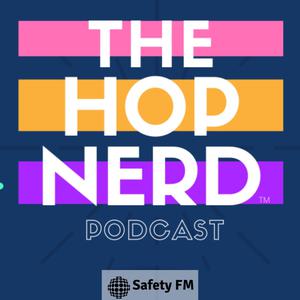 The HOP Nerd
The HOP Nerd
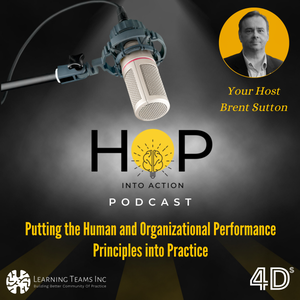 HOP Into Action Podcast Series
HOP Into Action Podcast Series
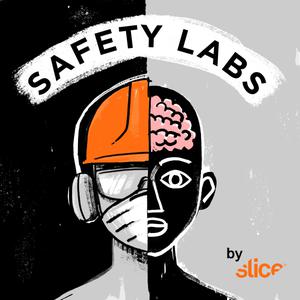 Safety Labs by Slice
Safety Labs by Slice
 PreAccident Investigation Podcast
PreAccident Investigation Podcast